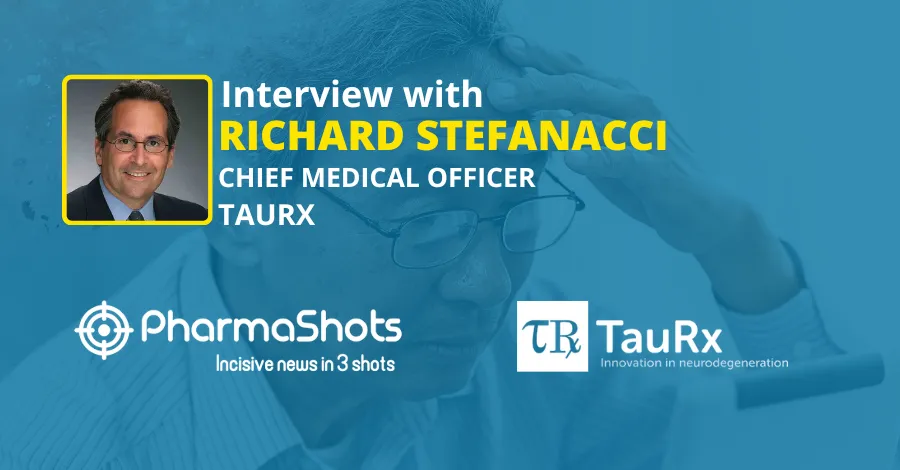
PharmaShots Interview: Eli Lilly's Dr. Lotus Mallbris Shares Insight on the Data of Taltz and Olumiant Presented at EULAR 2021
In an interview with PharmaShots, Dr. Lotus Mallbris, M.D., Ph.D., Vice President of Immunology Development at Lilly shared her views on the abstracts demonstrating data on the use of Taltz and Olumiant in rheumatic diseases, including psoriatic arthritis (PsA) and axial spondyloarthritis (axSpA) for Taltz, and rheumatoid arthritis (RA) for Olumiant.
Shots:
- Lilly reported that key data from Taltz (ixekizumab) & Olumiant (baricitinib) is highlighted at the virtual EULAR 2021
- Taltz demonstrated a long-term improvement in axSpA over 2yrs. and showed long-term inhibition of bone damage progression in radiographic axSpA (r-axSpA)
- Olumiant (4mg) provided improved pain relief and improved physical function in RA
Tuba: Can you give us an overview of the data presented at EULAR 2021?
Lotus: Lilly presented several abstracts that highlighted key data on the use of Taltz (ixekizumab) and OLUMIANT (baricitinib) in rheumatic diseases at EULAR 2021. Notably:
- Taltz showed sustained long-term improvements in axSpA over two years (Poster 0912): In the long-term COAST-Y study, more than half (56.7%) of patients treated continuously with Taltz (80 mg every four weeks) through two years achieved Assessment of SpondyloArthritis international Society 40% response (ASAS40). Notably, 43.9% of patients achieved low disease activity status, as measured by Ankylosing Spondylitis Disease Activity Score (ASDAS) <2.1, and the safety profile of Taltz was consistent with previously published safety data.
- Taltz showed long-term inhibition of bone damage progression in radiographic axSpA (r-axSpA) (Poster 0918): In an analysis of two Phase 3 studies in r-axSpA (COAST-V and COAST-W) and a long-term extension trial (COAST-Y), 9 out of 10 patients treated with Taltz showed maintenance of efficacy with no radiographic progression for up to two years, as measured by mean change from baseline of modified Stoke Ankylosing Spondylitis Spinal Score. These results were similar among patients who were previously treated with anti-TNF therapy or who had not previously been treated with a biologic.
- OLUMIANT 4 mg provided improved pain relief and improved physical function in RA (Poster 0646): A post-hoc analysis of the Phase 3 RA-BEAM study showed patients treated with OLUMIANT 4 mg saw greater improvements in pain relief and physical function, as well as reduced duration of morning joint stiffness, at 12 weeks compared to HUMIRA (adalimumab) and placebo.
Tuba: What is Taltz? Discuss its importance among patients with axial spondyloarthritis?
Lotus: Taltz is a monoclonal antibody that selectively and with a high affinity binds with interleukin 17A (IL-17A) cytokine and inhibits its interaction with the IL-17 receptor. IL-17A is a naturally occurring cytokine that is involved in normal inflammatory and immune responses.
Axial spondyloarthritis (axSpA) is a chronic inflammatory condition consisting of two subtypes, non-radiographic axial spondyloarthritis (nr-axSpA) and ankylosing spondylitis (AS), also known as radiographic axial spondyloarthritis (r-axSpA). If left uncontrolled, individuals living with axSpA can experience a range of severe, chronic pain and structural damage, which is why patients living with axSpA are in need of treatment options that can provide long-term efficacy.
The COAST-V, COAST-W & COAST-Y data presented at EULAR demonstrated that treatment with Taltz provides consistent, long-term efficacy on common signs and symptoms over time in axSpA.
- In the long-term COAST-Y study, more than half (56.7%) of patients treated continuously with Taltz (80 mg every four weeks) through two years achieved Assessment of SpondyloArthritis international Society 40% response (ASAS40). Notably, 43.9% of patients achieved low disease activity status, as measured by Ankylosing Spondylitis Disease Activity Score (ASDAS) <2.1, and the safety profile of Taltz was consistent with previously published safety data.
- In an analysis of two Phase 3 studies in r-axSpA (COAST-V and COAST-W) and a long-term extension trial (COAST-Y), 9 out of 10 patients treated with Taltz showed maintenance of efficacy with no radiographic progression for up to two years, as measured by mean change from baseline of modified Stoke Ankylosing Spondylitis Spinal Score. These results were similar among patients who were previously treated with anti-TNF therapy or who had not previously been treated with a biologic.
Tuba: What were the conclusions of the P-III RA-BEAM study when patients were treated with Olumiant?
Lotus: In a posthoc analysis of Phase 3 RA-BEAM study, patients with RA treated with OLUMIANT 4 mg saw greater improvements in pain relief and physical function, as well as the reduced duration of morning joint stiffness, at 12 weeks compared to HUMIRA and placebo. These differences in pain relief were not influenced by disease activity during treatment. In this analysis, improvements in fatigue with OLUMIANT 4 mg were greater than with placebo and similar to HUMIRA after 12 weeks of treatment. This analysis offers valuable insights to rheumatologists seeking to help their patients reduce disease activity and address the symptoms that are important to patients.
Tuba: How rapid and concurrent Improvements in patient-reported outcomes of rheumatoid arthritis with Olumiant (baricitinib) in RA-BEAM are seen?
Lotus: In a posthoc analysis of the Phase 3 RA-BEAM study, patients treated with OLUMIANT 4 mg saw greater improvements in pain relief and physical function as early as one week. Statistically dignatiic, as well as the reduced duration of morning joint stiffness, at 12 weeks compared to HUMIRA and placebo
Statistically, significant improvements were reported as early as Week 1 for pain, morning joint stiffness (MJS) severity, Health Assessment Questionnaire-Disability Index (HAQ-DI), and Patient Global Assessment of disease activity (PtGA) and at Week 4 for Functional Assessment of Chronic Illness Therapy-Fatigue (FACIT-F) and SF-36 PCS scores. Statistically, significantly larger improvements were observed as early as Week 2 for pain, PtGA, Week 3 for MJS severity, and Week 4 for HAQ-DI and SF-36 PCS scores. These improvements were maintained to Week 12.
Tuba: Discuss the key points of Olumiant data presented at EULAR 2021.
Lotus: In posthoc Phase 3 analyses, OLUMIANT reduced pain and duration of morning joint stiffness, and improved overall physical function, among patients with moderate to severe rheumatoid arthritis (RA), compared to HUMIRA and placebo. Given the daily symptoms that still impact many patients with RA, this analysis offers valuable insights to rheumatologists seeking to help their patients reduce disease activity and address burdensome symptoms of RA.
Tuba: Let us know more in detail about Olumiant and its discovery? And where it is used in the treatment of pneumonia associated with COVID-19 in adult patients?
Lotus: OLUMIANT, a once-daily, oral JAK inhibitor was discovered by Incyte and licensed to Lilly. It is approved in the U.S. and more than 75 countries as a treatment for adults with moderate to severe rheumatoid arthritis and is approved in more than 40 countries, including the European Union and Japan, for the treatment of adult patients with moderate to severe atopic dermatitis who are candidates for systemic therapy.
OLUMIANT was recently approved for use in Japan as a treatment of pneumonia associated with COVID-19 in combination with remdesivir in hospitalized adult patients. Emergency use authorizations have been issued in the U.S., India, United Arab Emirates, Kuwait, Lebanon, Mexico, and Slovakia, and countries such as Spain, Russia, Mexico, and Saudi Arabia included baricitinib as part of their national COVID-19 treatment guidelines. Baricitinib is also being investigated in alopecia areata (AA), juvenile idiopathic arthritis (JIA), and systematic lupus erythematosus (SLE).
Tuba: How Taltz showed sustained long-term improvements in axSpA through two years?
Lotus: In COAST-Y, Taltz showed consistently and sustained long-term improvements in signs and symptoms, functionality, and quality of life in patients with r- and nr-axSpA. In this study, more than half of patients (56.7%) treated continuously with Taltz (80 mg every four weeks, n=157) through two years achieved Assessment of SpondyloArthritis international Society 40% response (ASAS40). Among those treated continuously with Taltz every four weeks for two years:
- 43.9% of patients achieved low disease activity status, as measured by Ankylosing Spondylitis Disease Activity Score (ASDAS) <2.1. Mean change from baseline (3.9) in ASDAS score was -1.6.
- 19.7% achieved ASAS partial remission status.
- Mean change from baseline (6.6) in Bath Ankylosing Spondylitis Functional Index (BASFI) was -2.8.
- Mean change from baseline (33.9) in Medical Outcomes Survey Short Form 36 Physical Component Summary (SF-36 PCS) was 8.4.
- The safety profile of Taltz was consistent with previously published safety data, and no new safety signals were observed after up to two years of treatment.
Tuba: What was the objective of COAST-V, COAST-W & COAST-Y? What were the results of this objective?
Lotus: An analysis of two Phase 3 studies in r-axSpA (COAST-V and COAST-W) and the long-term extension trial (COAST-Y) evaluated progression in the spine among patients with active r-axSpA/AS treated with Taltz for 2 years (commencing in COAST-V or COAST-W and continuing in COAST-Y) and aimed to identify potential predictors of spinal radiographic progression.
The study found that 9 out of 10 patients treated with Taltz (89.6%, n=206) showed maintenance of efficacy with no radiographic progression for up to two years, as measured by the mean change from baseline of modified Stoke Ankylosing Spondylitis Spinal Score (mSASSS) <2. Overall mean rates of progression were low among patients treated with Taltz. These results were similar among patients who were previously treated with anti-TNF therapy (88%, n= 106) and those who had not previously been treated with a biologic (91%, n=100). In addition to known predictors, the novel finding is that attainment of remission of inflammation on MRI at one year protected from progression at two years.
Tuba: What are the major steps Eli Lilly and the company are taking in championing ground-breaking novel science in the field of immunology?
Lotus: Lilly is bringing our heritage of championing groundbreaking, novel science to immunology and is driven to change what's possible for people living with autoimmune diseases. There are still significant unmet needs, as well as personal and societal costs, for people living with a variety of autoimmune diseases and our goal is to minimize the burden of disease. Lilly is investing in leading-edge clinical approaches across its immunology portfolio in hopes of transforming the autoimmune disease treatment experience. We've built a deep pipeline and are focused on advancing cutting-edge science to find new medicines that offer meaningful improvements to support the people and the communities we serve.
Source: Banja Koviljaca
About Dr. Lotus Mallbris:

Dr. Mallbris is the Vice President and Global Head of Immunology Product Development at Eli Lilly and Co. She joined Lilly in 2015 and leads the company's multifunctional Global Clinical Development and Global Medical Affairs teams across the dermatology, rheumatology, and gastroenterology fields.

This content piece was prepared by our former Senior Editor. She had expertise in life science research and was an avid reader. For any query reach out to us at connect@pharmashots.com













